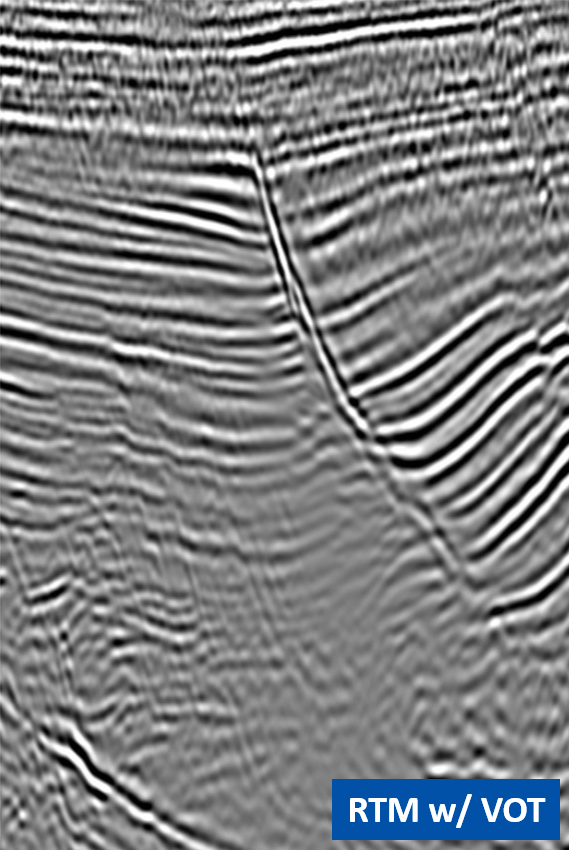Vector Offset/Angle Tiling (VOT/VAT)
In-Depth Proprietary Technology
Rather than relying on angle stacks alone for detailed interpretation, we decompose data into tile stacks based on inline and crossline offset (VOT) or subsurface reflection angle and azimuth (VAT). We can then manually or algorithmically customize the weighting of each of these tiles to produce a fully-tailored final stack, cutting out noisy regions and enhancing signal (Fig. 1). This leads to significant improvement in the final stack, especially around complex geology with salt bodies and faults (Fig. 2).
We can also generate multiple stack variations depending on different possible interpretations of the data. In regions with conflicting dips due to azimuthal asymmetries, we can generate several stacks depending on which dip angle or offset/angle tiles we assume to contain the most accurate information, hugely aiding interpretation (Fig. 3).
Fig. 1. Raw RTM Stack (top left) and individual Vector Offset Tiles (VOT), colored by weighting. (Blue is more heavily weighted, yellow is less weighted.) Note that in the far offset tiles, coherent signal can be precisely mapped and included in the final stack while excluding strong noise and overcritical energy.
Fig. 2. Raw RTM Stack (left) and RTM w/ VOT Stacking (right). This VOT was highly targeted, designed to eliminate dipping multiples below the central fault. These multiples were only present in certain vector-offset tiles, which were de-weighted around the fault as shown in Fig 1, leading to improved imaging.
Fig. 3. Three varying interpretive VOT stacks near a salt body. Interpretation 1 favored large-dip events, Interpretation 2 favored flat horizontal events, and Interpretation 3 favored flat events in the upper circled region and steeper events in the lower circled region. Armed with multiple different VOT stacks in conflicting-dip regions, interpreters can better determine the true underlying geological structure.


